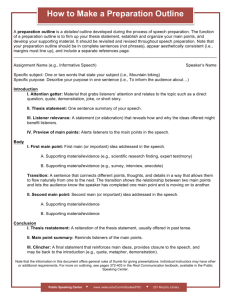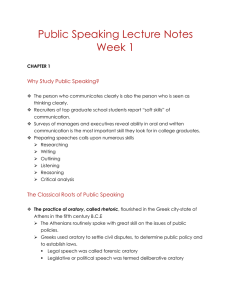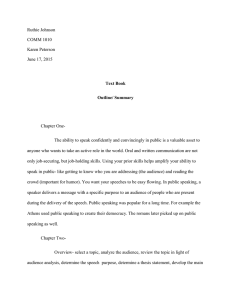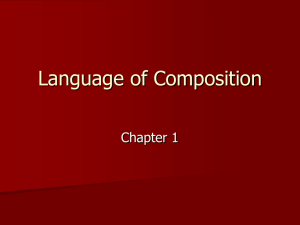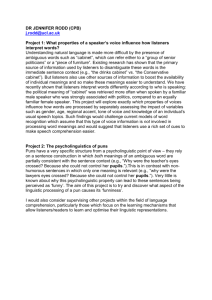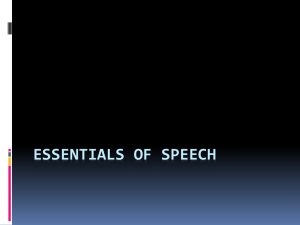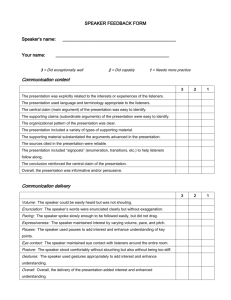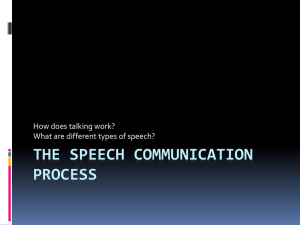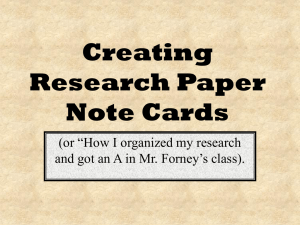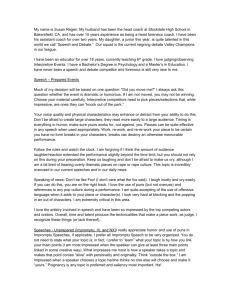How to Make a Preparation Outline
advertisement
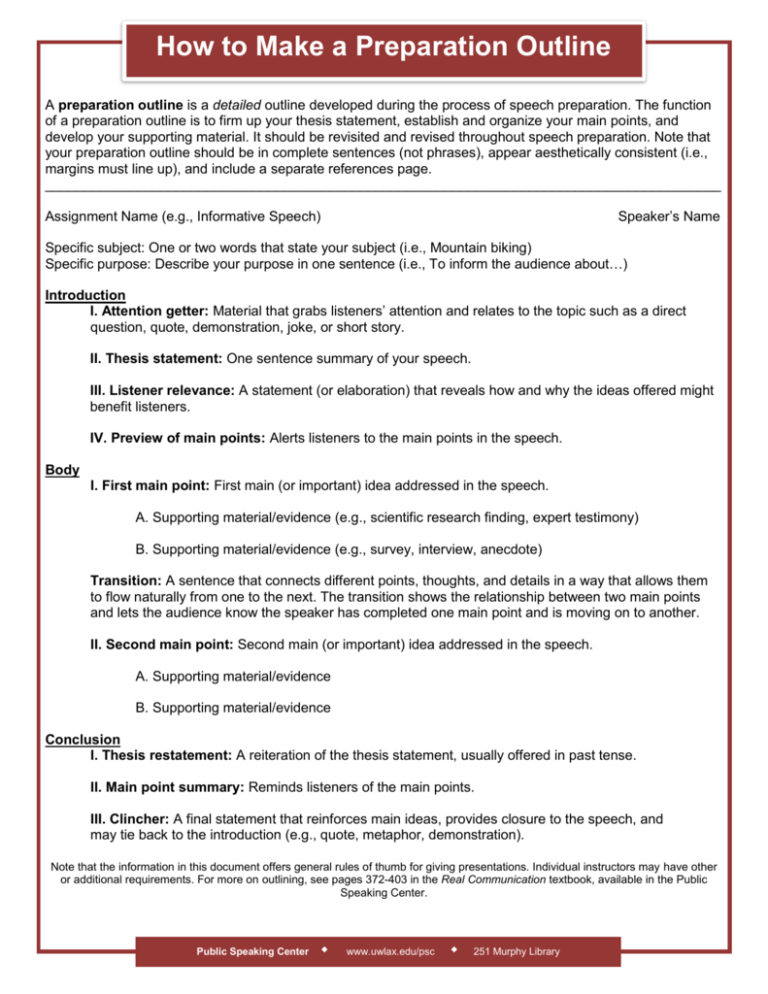
How to Make a Preparation Outline A preparation outline is a detailed outline developed during the process of speech preparation. The function of a preparation outline is to firm up your thesis statement, establish and organize your main points, and develop your supporting material. It should be revisited and revised throughout speech preparation. Note that your preparation outline should be in complete sentences (not phrases), appear aesthetically consistent (i.e., margins must line up), and include a separate references page. ________________________________________________________________________________________ Assignment Name (e.g., Informative Speech) Speaker’s Name Specific subject: One or two words that state your subject (i.e., Mountain biking) Specific purpose: Describe your purpose in one sentence (i.e., To inform the audience about…) Introduction I. Attention getter: Material that grabs listeners’ attention and relates to the topic such as a direct question, quote, demonstration, joke, or short story. II. Thesis statement: One sentence summary of your speech. III. Listener relevance: A statement (or elaboration) that reveals how and why the ideas offered might benefit listeners. IV. Preview of main points: Alerts listeners to the main points in the speech. Body I. First main point: First main (or important) idea addressed in the speech. A. Supporting material/evidence (e.g., scientific research finding, expert testimony) B. Supporting material/evidence (e.g., survey, interview, anecdote) Transition: A sentence that connects different points, thoughts, and details in a way that allows them to flow naturally from one to the next. The transition shows the relationship between two main points and lets the audience know the speaker has completed one main point and is moving on to another. II. Second main point: Second main (or important) idea addressed in the speech. A. Supporting material/evidence B. Supporting material/evidence Conclusion I. Thesis restatement: A reiteration of the thesis statement, usually offered in past tense. II. Main point summary: Reminds listeners of the main points. III. Clincher: A final statement that reinforces main ideas, provides closure to the speech, and may tie back to the introduction (e.g., quote, metaphor, demonstration). Note that the information in this document offers general rules of thumb for giving presentations. Individual instructors may have other or additional requirements. For more on outlining, see pages 372-403 in the Real Communication textbook, available in the Public Speaking Center. Public Speaking Center www.uwlax.edu/psc251 Murphy Library How to Make a Speaking Outline A speaking outline (also called delivery or keyword outline) is a brief outline used to jog a speaker's memory during the presentation. The speaking outline should aid in extemporaneous delivery. Follow these tips: Select important words and phrases from your preparation outline to create a keyword outline. Try to use as few words as possible on the speaking outline to keep you from reading your speech. Make sure that your speaking outline fits on a half sheet of paper or 3 index cards. large font Use Consider including delivery cues, which are brief reminders about important information related to the delivery of your speech. For example, a student who has a tendency to speak with low volume might write, “louder!” Consider including difficult-to-remember information and oral citations. For example, a speaker might include some of the following details to aid in stating an oral citation: “Sheila Dinn, author of Hearts of Gold: A Celebration of Special Olympics and Its Heroes, published in 1996, mentions that more than 1.3 million athletes compete in Special Olympics around the world.” Practice your speech using the speaking outline. so you can see the words easily. A student giving a self-introduction speech used the keyword outline pasted below. Note that he found it helpful to include reminders about his attention getting quote, main points, transitions, and needing to speak louder. In this student’s case, he glanced at his speaking outline approximately 5 times during his 3-minute speech. Overall, the speaking outline aided him in delivering extemporaneously. -Quote: life is either a great adventure or nothing -We’re in this together, learn from one another 1. Past: moved around as child, countries visited, reflection **transition** 2. Present: Into the Wild book, risks, trauma **transition** *LOUDER* 3. Future: Dreamer, uncertainty Public Speaking Center www.uwlax.edu/psc251 Murphy Library
